Artist Name
You can click on the medals to see the reverse.
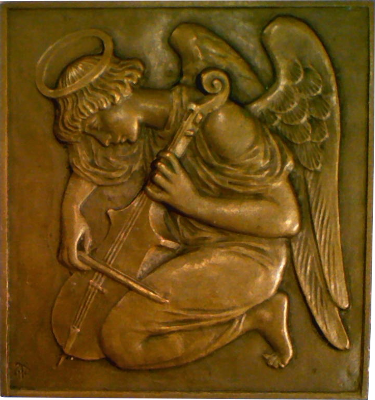
This plaque bears angel kneeling left, playing a violin. Signed at lower left with (TSS monogram).
Spicer-Simson's Angel with Violin is an early work that he created while staying in Paris. It is very much an Art Nouveau motif and demonstrates how strongly he was influenced by the French masters that he worked with.
The plaque is a little gem and supposedly very rare. It is very different from most of his other medallic works that were predominantly portraits.
The rectangular plaque measures 48mm x 52mm and was struck in Paris.
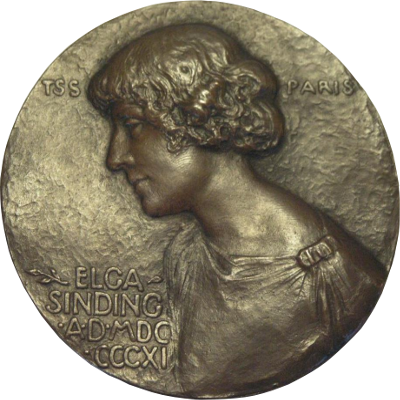
This plaque bears likeness of Elga Sinding, facing left. At lower left, ELGA / SINDING / · A · D · MDC / · CCCXI; signed at top, TSS - PARIS
Elga Sinding (1859-1936) was an actress and muse and wife of sculptor Stephan Sinding. Thomas Spicer-Simson met the Sindings while staying in Paris and created this beautiful little portrait plaque in 1911. The plaque was part of an exhibition of Portrait Reliefs and Medals by Spicer-Simson that was shown at the Art Institute of Chicago in 1919.
The circular plaque measures 107.8mm in diameter.
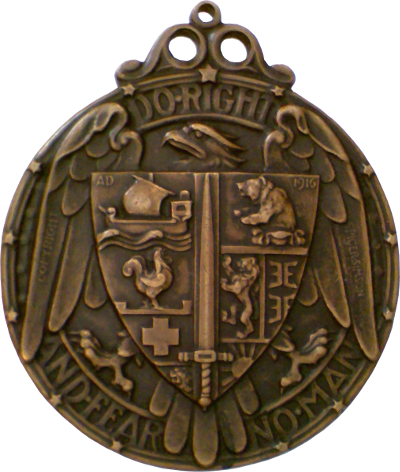
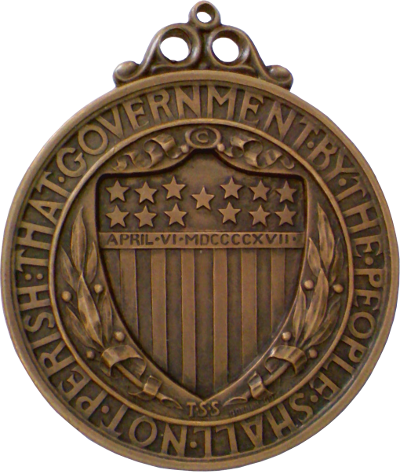
This medal's obverse bears the Allied arms on shield over American Eagle. Around, DO · RIGHT / AND · FEAR - NO · MAN; on shield, AD - 1916; on wings, COPYRIGHT / SPICER · SIMSON
The reverse bears American shield with stars and sripes framed by two laurel branches; under stars, APRIL · VI · MDCCCCXVII ·. Around, : THAT · GOVERNMENT · BY ·THE · PEOPLE · SHALL · NOT · PERISH; above and below shield, © / T · S · S; under right branch GORHAM CO.
The motto on the obverse is taken from the inscription of George Washington's dress sword. A limited but unknown number of these large medals were offered at a cost of $20 in bronze and $30 in silver. The medal was conceived by the American Fund for French Wounded with the profits supporting relief work for French soldiers and civilians.
The circular medal measures 63.4mm in diameter (74.8mm with loop) and was struck in bronze and silver by the Gorham Company. No mintage is reported.
References: Baxter 315, Marqusee 362
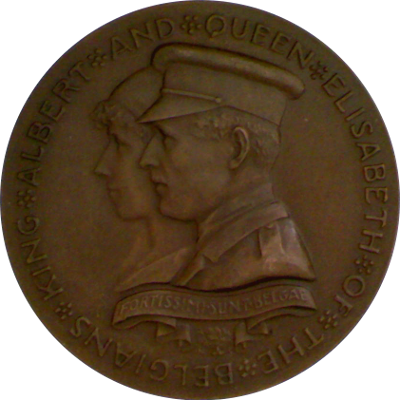

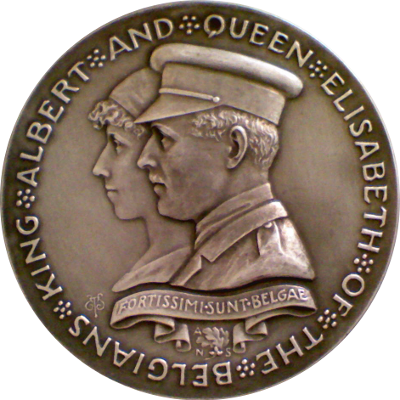
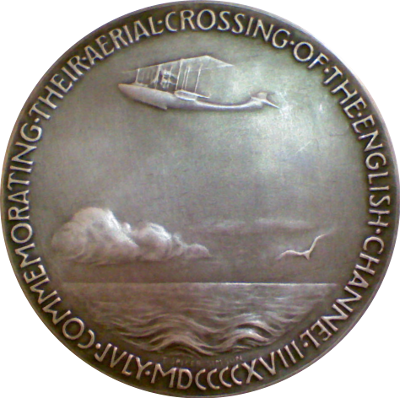
This medal was the 37th official issue of the American Numismatic Society.
The obverse bears conjoined busts of Belgium's King and Queen facing left. Below, streamer with legend FORTISSIMI - SUNT - BELGAE; at bottom, ANS sigil. Around, KING * ALBERT * AND * QUEEN * ELISABETH * OF * THE * BELGIANS; signed (TSS monogram) in lower left field.
The reverse bears channel seascape with low-flying bi-plane, clouds, and flying bird. Around, COMMEMORATING - THEIR - AERIAL - CROSSING - OF - THE - ENGLISH - CHANNEL - JULY - MDCCCCXVIII; signed below waves, T. SPICER-SIMSON
The medals are edge-stamped MEDALLIC ART CO. N.Y. and inscribed with a number.
This medal was issued by the American Numismatic Society to commemorate the flight of the king and queen of Belgium to England on the occasion of King George and Queen Mary's silver anniversary. The celebrations took place in London on July 6th, 1918.
The latin quote on the obverse is an abbreviation from the opening paragraph of Caesar's Commentaries on the Gallic War—"(Horum eorum) fortissimi sunt Belgae", meaning "The bravest of these are the Belgians." It is easy to forget that the year was 1918 and World War I was still being fought in Europe. Flying across the Channel by itself was not yet a common endeavor, but doing it during an active war was certainly a display of courage that cold not help but boost morale.
The medal measures 63.8mm (2.5in) and was struck by the Medallic Art Company of New York in bronze and silver. As with all early ANS medals, the mintage is very low; only 97 medals were struck in silver and 136 in bronze. Originally, the silver medals were sold for $10 and the bronze medals for $5.
References: Baxter 160, Eimer 1961, Johnson 32, MACo 1918-009, Marqusee 365, Storer 960
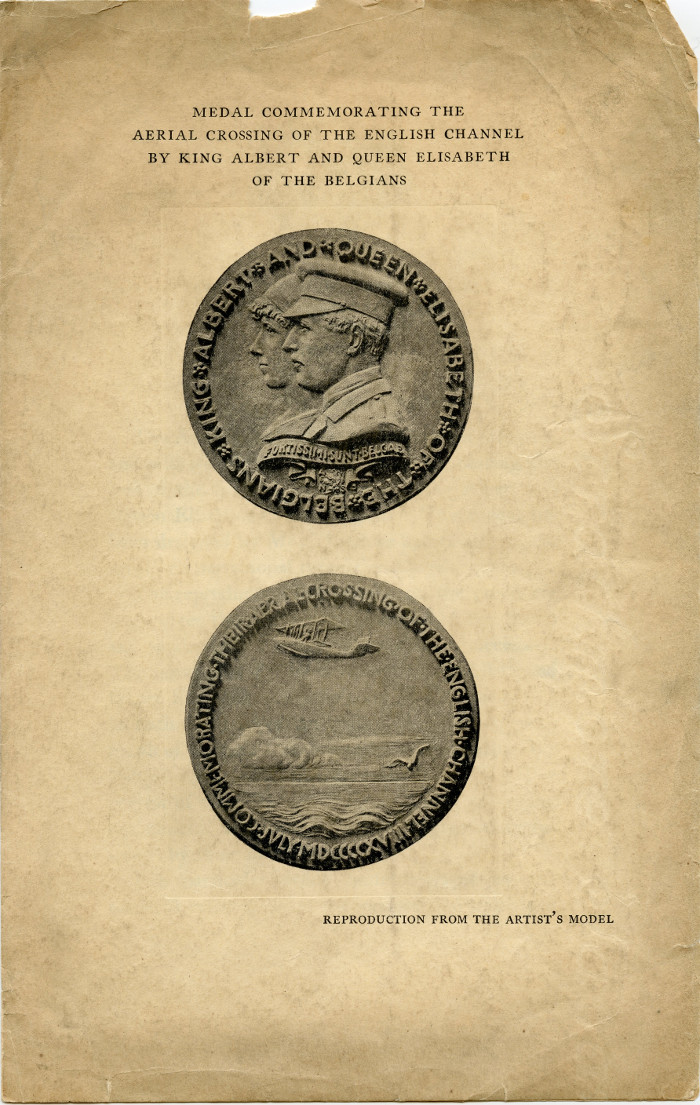
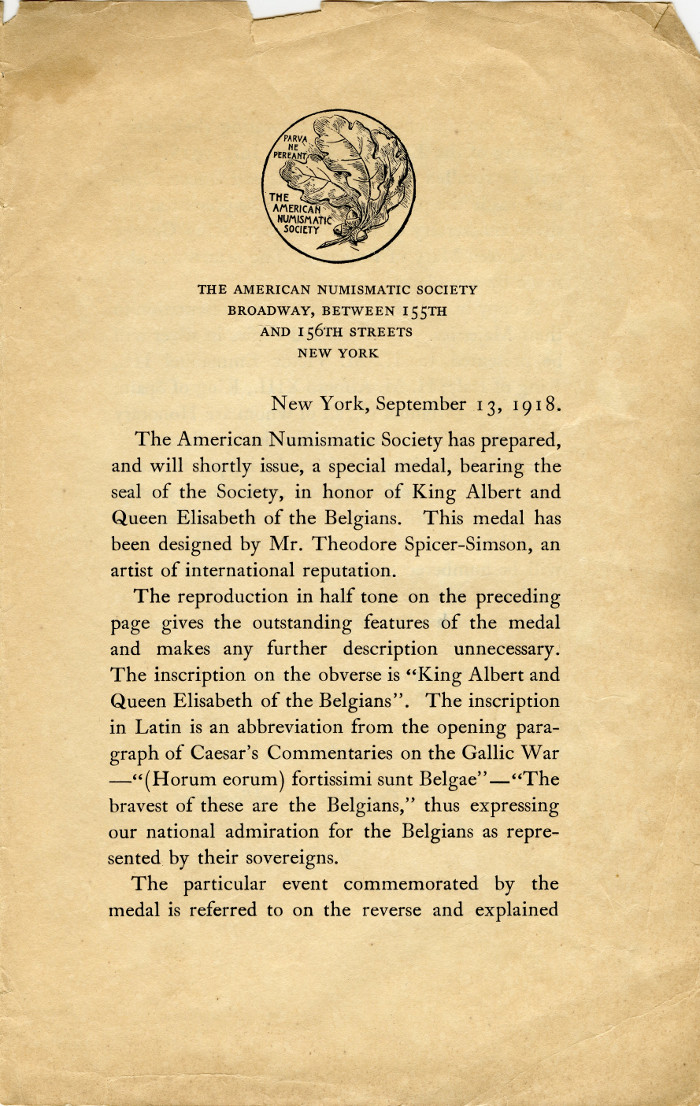
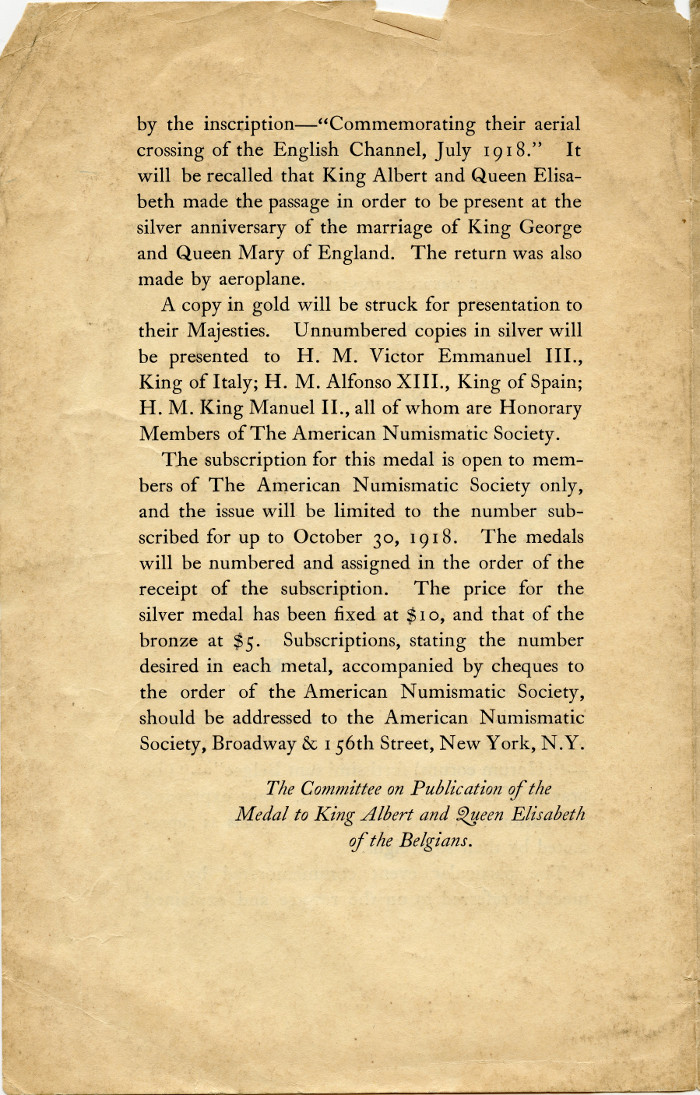
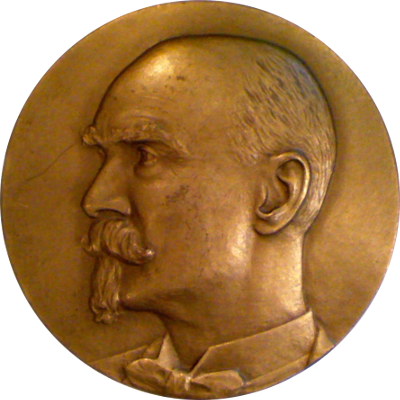
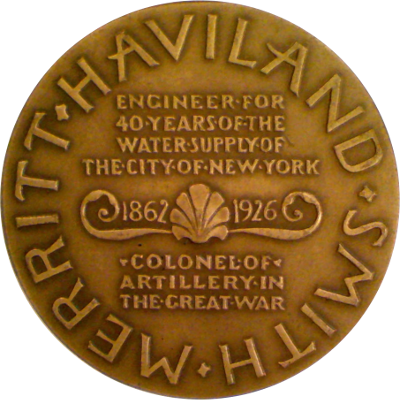
This medal's obverse bears portrait of Smith facing left.
The reverse bears text. Around, MERRIT · HAVILAND · SMITH ·; in center, ENGINEER · FOR / 40 · YEARS · OF · THE / WATER · SUPPLY · OF / THE · CITY · OF · NEW · YORK / 1862 (shell) 1926 / · COLONEL · OF · / ARTRILLERY · IN / THE · GREAT · WAR
Merrit Haviland Smith was born on May 21, 1862 in New York City. After an education in public schools and additional private tutors he graduated from the Pennsylvania Military College with a degree in civil engineering in 1880. After three years with the Pittsburgh and Western Railroad he joined the New York City Department of Public Works where he worked for the rest of his civilian life. In addition to his service as an Artillery Colonel in World War I, he also served with the New York National Guard in Puerto Rico from 1898 to 1899. He died in 1926.
This medal appears to be a copy of the bronze plaque erected in his memory at Kensico Dam shortly after his death in 1926.
The circular medal measures 50.4mm in diameter and was struck in bronze by the Medallic Art Company of New York. No mintage is reported.
References: MACo 1928-033